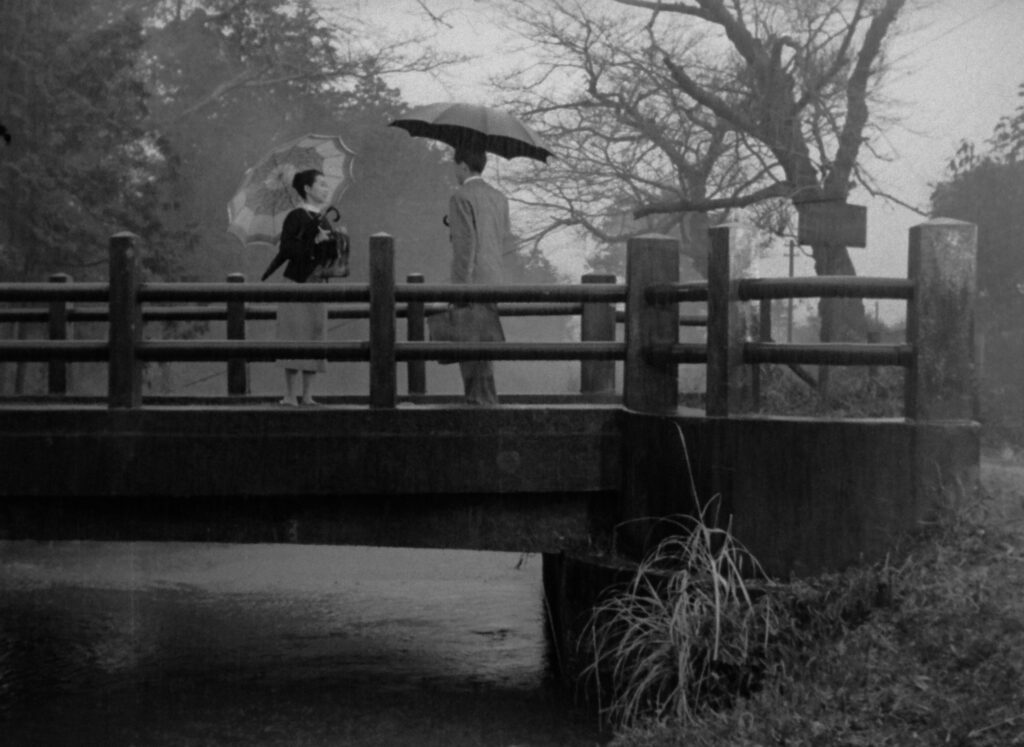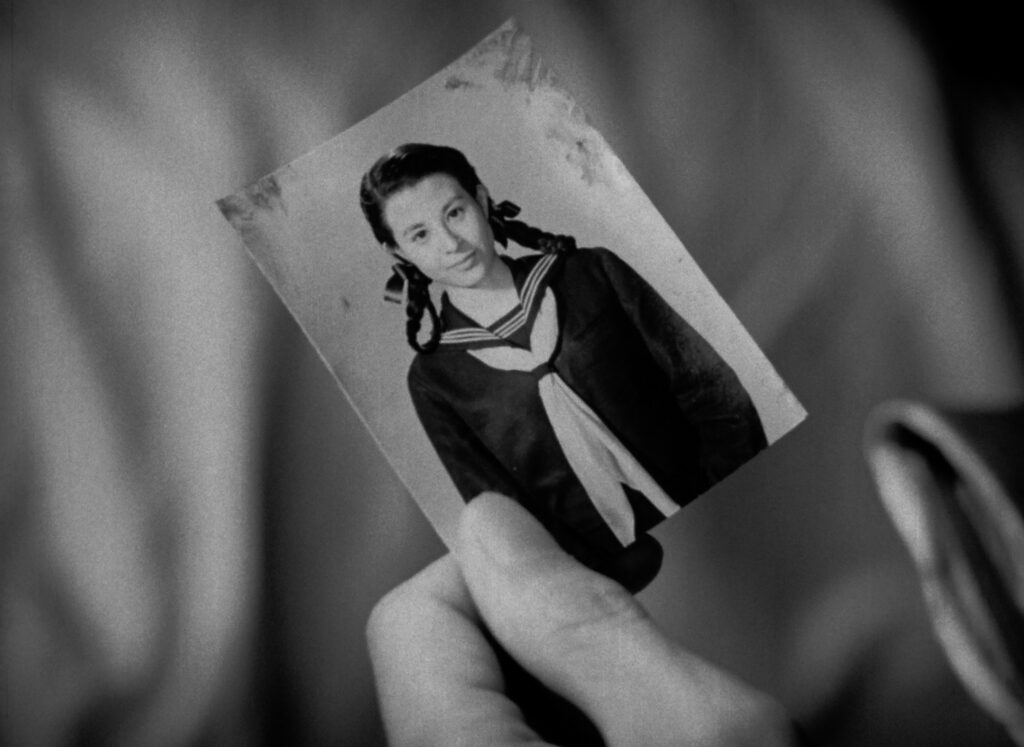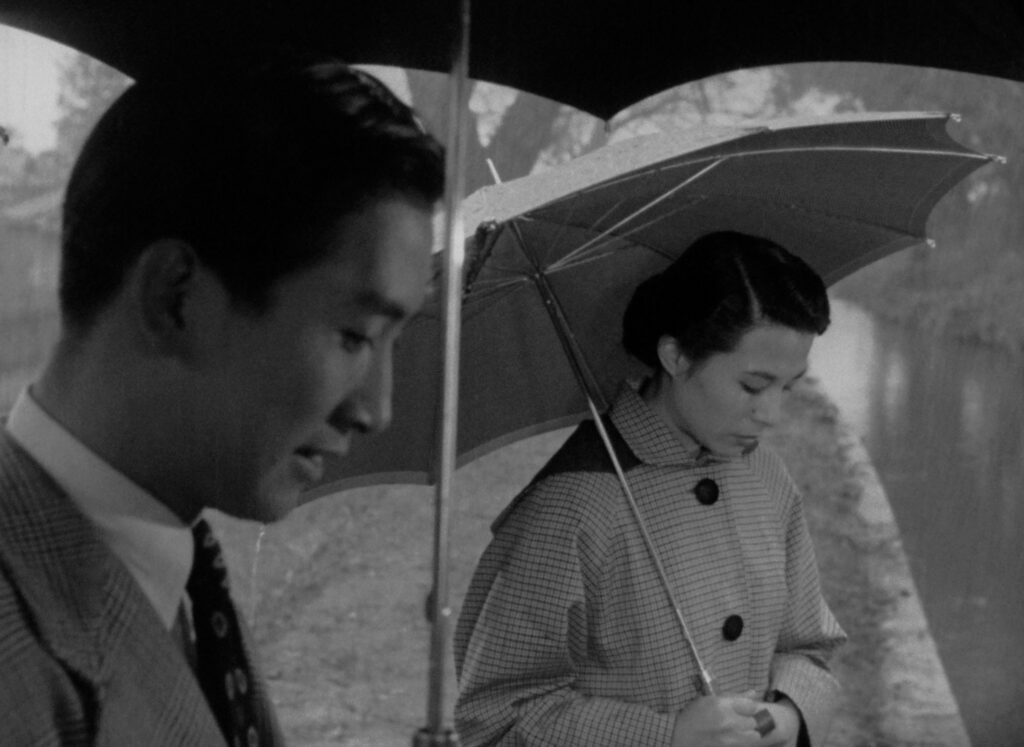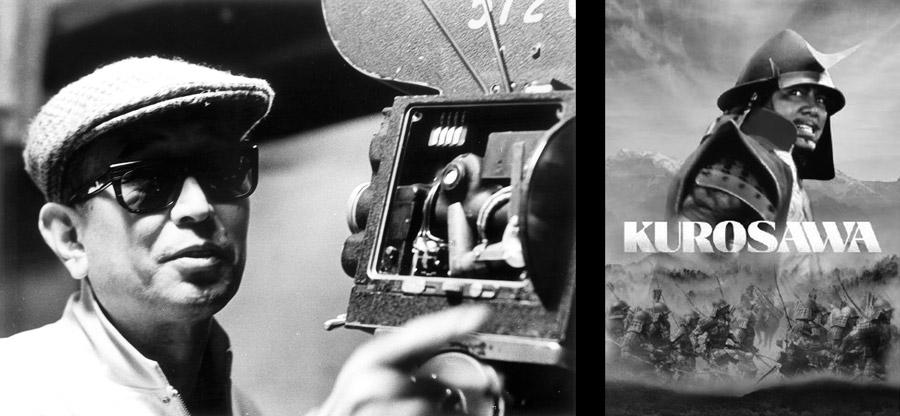As part of BFI’s Kinuyo Tanaka: A Life in Film
Japanese title: Koibumi
Director: Kinuyo Tanaka
Based on the novel by Fumio Niwa
Released: Japan 1953
Run time: 98 minutes
Love Letter, a debut film by the award-winning actress Kinuyo Tanaka turned director, is a post-war melodrama focusing on the rebuilding of Japan and the lives of its people. It follows the story of Reikichi Mayumi, a man who is given the opportunity to use his bilingual skills in a new role — writing love letters on behalf of Japanese women.
However, it becomes clear that it is his own love letter that occupies his mind and the ongoing search for its sender. Little does he know, his new role will play a huge part in finding the answer but doesn’t help the internal struggle that ensues.
Re-discovering Greatness?
Japanese cinema is a lot like exploring a secondhand dealer in the sense that there are a lot of under-recognized products. At the front are a handful of brands and names that almost everyone knows; Akira Kurosawa’s Seven Samurai and Rashomon; Yasujiro Ozu’s Tokyo Story; maybe even Takeshi Kitano more recently; beyond that, for many, things begin to get a bit blurry,
With a bit of digging, you can find some solid buys that are well worth the time and effort. If you spend enough time, however, searching the very bottom of the shelves and every crevice of the store, you’ll find an absolute gem that has no right at all in being in the position you find it.
Love Letter directed by Kinuyo Tanaka is just like that.
It’s a film that highlights the situation of Japan, and more importantly, the people of Japan during the years after world war two. It’s a film that has been largely forgotten, by a director that has also been largely forgotten — until recently. Despite it’s release being almost 70 years ago, Love Letter holds firm as a title that showcases a passion for cinema with themes that are scarily just as relevant today as back then.
A Story of Contrasts

We enter Japan five years after the conclusion of the second world war in a state of recovery and modernisation. There is a sense of normality and even optimism in the air, especially early on, as we are introduced to the Mayumi brothers; Reikichi and Hiroshi.
The aforementioned optimistic spirit is the epitome of Hiroshi’s character who is both entrepreneurial and opportunistic, whereas Reikichi, the main protagonist to the story couldn’t be further at the other end of the spectrum.
This is the first contrast of many which proves to be a vital technique in delivering Kinuyo’s narrative.
Reikichi, who is an ex-serving naval officer, reconnects with an old friend offering a new role — writing love letters on behalf of Japanese women. However, these women have no intention of love. They are written in English and sent to countless American soldiers in the hope of receiving financial support and stability.
It’s a reflection of the situation many women were in after the war and the avenues open to them — or thereby lack of — and is very much a focal theme both in Love Letter and Kinuyo’s other films.
It’s Reikichi’s own perspective of the issue in contrast with the other characters that gives the theme weight. This is further pronounced as the story progresses. We find ourselves beginning to actively notice differences in the protagonist’s thought processes to those around him. At the same time, that ‘optimism’ seen amongst other characters continues its losing battle but helps compound a change in tone that becomes quite stark as opposed to the story’s outset.
This means that Love Letter directed by Kinuyo Tanaka is incredibly character driven and great attention is given in highlighting individual qualities.

It becomes clear that there’s a specific reason behind Reikichi’s dour outlook; he is looking for his own forgotten love interest who makes herself known during the course of the movie.
This promotes a tonal shift, a nudge towards Kinuyo’s goal of showing the lives of women. But let’s be clear here — this is not a forceful implementation, rather, it’s a modest inclusion that underpins the rest of the film where it simmers until it’s ready to emerge at the opportune moment.
There are moments however where the audience gets a taste of this bubbling undercurrent, albeit briefly, but with incredible purpose. Where a single line is delivered so startlingly that it pierces the screen straight to the chest. In all honesty it’s a kind of feeling that I’ve not witnessed in a film for a very long time and at that moment, for me, cemented Kinuyo Tanaka as a great director.
The film goes on to explore women’s reputation through (once again) contrasting characters, and how they are often tarred with the same brush despite their efforts; these situations ultimately arise through Reikichi’s actions and perspective on women.
This brings us to another incredibly important technique Kinuyo employs to deliver her narrative.
Despite wanting to explore women’s issues, Kinuyo chose a male lead to drive the narrative. But why?
Consider this: what is the most effective way to get someone to understand a topic? Directly explaining the situation that you take at face value? or, allowing the audience to come to the conclusion themselves through observation?
The latter would obviously be more ideal and is the case with Love Letter. It’s Reikichi’s own words and actions that create a jarring effect and triggers the audience to actively consider the iniquity of the situation.
In all honesty, it’s masterfully done.
An Unrelenting Focus

Aside from all the underlying narrative themes and comparative techniques, there are components of quality cinematography.
Moments of humour told through brief spells of dramatic irony; realistic reactions and facial expressions are playful and often relatable. Then there are the establishing shots that immerse the audience in the gritty backstreets of Japan; good framing and timing that eliminate any cutting back and forth; and an overall focus on showing only what is necessary for the film.
One point of contention might be how the film feels very westernised. Depending on your situation, it could be a good entry into Japanese cinema, or it could be disappointingly un-Japanese. Either way, this is a reflection of the times. Japan was under American occupation until 28th of April 1952 – only a year and a half before the release of Love Letter — which brought about a lot of western customs and changes to Japanese society.
While Kinuyo’s Love Letter is entirely focused on delivering its proposed narrative, I felt it may be too much so.
This may seem like a bit of a contradiction, but hear me out.
At the same time of the aforementioned tonal shift, after Reikichi rediscovers his love interest, the narrative becomes totally singular. While the first half of the film certainly had a focus, other characters and mini-sub plots were also present, giving a bit of padding to the world. The second half lost most of that additional substance (which is a real shame) and felt Kinuyo suffered from a bout of tunnel vision.
This isn’t enough to derail the entire film however, but merely a slight disappointment in an otherwise compelling story.
Final Thoughts

Love Letter has an air of hopeless romanticism to it. It’s a feeling that doesn’t pertain to just the characters, but as an overall quality to the film. Certainly there are times when it feels more hopeless than others but it is constantly there.
I say this because, despite following a downcast protagonist, you’re never reduced to the same lows that he exudes; instead, you’re left with a feeling of optimism. Optimism brought on by those around him — the same optimism Hiroshi displays early on but which we all quickly forget.
And that’s how I would describe Love Letter by Kinuyo Tanaka. A story that forces you to see beyond one man’s perspective — beyond the given narrative. A story that contributes just as much behind the scenes as it does at the forefront.
Find out more of BFI’s Kinuyo Tanaka: A Life in Film here.














































